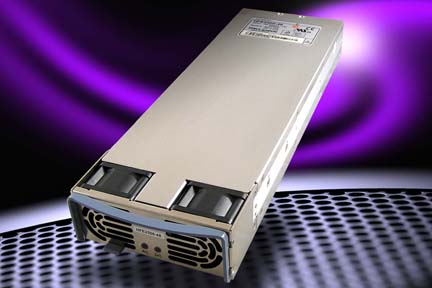First thing on the agenda is to thank Jose for inviting me on Data Center Tactics to chat about all things data center. It really is a great opportunity to discuss the challenges facing our industry as well as the innovations that are peeking from just above the horizon.
In the data center space, the most fruitful conversations stem from crossing the department lines and finding out exactly what you have in common. Once you’ve got that out of the way then it’s up to you to decide whether or not a bouncy castle cage match is going to happen. In all seriousness though, a perceived schism exists such that facilities teams traffic in electrons and IT teams traffic in bits. That’s it, and there’s no overlap between the two.
Except…
The power supply itself acts as a figurative demilitarized zone in the handoff between facilities and IT. IT teams select the supply to make sure that the server’s guts have enough juice to operate while the facilities teams validate that the summation of power requirements can be fulfilled. The assumption is that these mystical black boxes have linear consumption behavior and have excellent power quality characteristics. Under those assumptions, the handoff between the two groups is a simple exercise. Foreign diplomats aren’t even required to make the exchange. The problem is, the assumptions need some tweaking, and that’s where the conversation starts.
If you visit Hewlett-Packard’s website, you’ll notice that there is a dedicated microsite for their series of common slot power supplies. It’s nice to see the amount of attention placed on power delivery, efficiency, and green IT. To boot, the availability of tech specs is open, non-proprietary, and great. When you open the N. America quick specs you’ll see tables like this:
[frame src=”http://www.datacentertactics.com/wp-content/uploads/2012/12/HPPS_stats.jpg” width=”588″ height=”439″ lightbox=”on” ]
http://h18004.www1.hp.com/products/quickspecs/14209_na/14209_na.html
The detail is stunning and reflects the unification of worldwide IT supply chain with their variation of input voltages. This is excellent data for planning a facility. The issue comes with interpolating normal operation characteristics.
0.998 Power Factor (PF) is a welcome number from the days of older switching-mode power supplies (SMPS). 0.998 PF is also a welcome number for utilities who have developed reactive penalty rates for those users with excessively low power factor loads. Selecting this power supply seems to mitigate that issue. The problem with accepting 0.998 is that this value is accurate at 100% load. What happens at loads less than 100% is another story.
Don’t interpret this as a massive worldwide conspiracy though. The data exists, and you don’t have to pay for a subscription. At the close of 2006, the EPA recognized data centers and enterprise computing emergence with the development of a power supply excellence standard. Supplemented by other organizations such as EPRI and 80 Plus, this standard is still under revision with 2.0 currently receiving comments. This program evaluates production servers for a variety of factors, including, you guessed it: Power Factor. Not only is power factor generically evaluated, but also it is done so at 10%, 20%, 50%, and 100% loading (equipped with a single power supply). To boot, HP and other manufacturers make it readily available. Let’s take a look at an HP ProLiant DL360G7:
[frame src=”http://www.datacentertactics.com/wp-content/uploads/2012/12/energystar_hp.jpg” width=”588″ height=”439″ lightbox=”on” ]
http://h18004.www1.hp.com/products/servers/4294pdfs/DL360G7579239xx1serverdatasheet.pdf
With comparable 0.982 PF at full load, you’ll notice that there’s a sharp drop off below 20% loading. At this point, you’re saying, “I wouldn’t even purchase the server if it was to be operated below 20%.” First, I would sense some hostility and run, but before that I would remind you that dual corded loads are very common, and these Energy Star tests are operated under a single power supply. That dilutes 100% server operation to 50% power supply utilization on two power supplies (I’ll caveat this statement later). That means it really is imperative that you understand the sub-50% range.
The purpose of this discussion isn’t to denounce the power quality characteristics of commodity servers. In fact, it’s important to celebrate their achievements and advancements over the last ten years. This discussion isn’t to denounce HP’s power supply performance either. Knowledge share from the manufacturers is phenomenal, and HP has done an excellent job of adopting the 80 Plus standards to date. Just to provide parity for the sake of detail, below is a chart for common 1U server platforms and their power factor characteristics:
[frame src=”http://www.datacentertactics.com/wp-content/uploads/2012/12/1U_PF.jpg” width=”588″ height=”439″ lightbox=”on” ]
The graphic below shows an interpolated data set from the table above for visual purposes:
[frame src=”http://www.datacentertactics.com/wp-content/uploads/2012/12/1U_PF_graph.jpg” width=”588″ height=”439″ lightbox=”on” ]
The links below direct you to each of the manufacturers’ sites with their own Energy Star Power and Performance Data Sheets:
http://h18004.www1.hp.com/products/servers/4294pdfs/DL360G7579239xx1serverdatasheet.pdf
The purpose of this discussion is to expose the detail of the mystical black box power supply with the intent of creating a fruitful conversation between the IT and facilities teams. From that, a variety of solutions and ideas can emerge to mitigate a power factor issue if it exists. IT teams can chime in and recommend a modification of the server BIOS to impact how the computer uses the two power supplies. Instead of operating in a 2N configuration where 50% of the required power is drawn from each power supply, an N+1 topology can be implemented to draw 100% of the required power from a single supply while placing the other in hot standby (see the previous caveat reference). Facilities teams can chime in with the suggestion of integrating dynamic power factor correction on problematic circuits.
Whichever one you select is irrelevant because the reality is, the DMZ is no longer there. I’m not throwing out the bouncy castle though.
Dave Fiedler is the Director of Technology at Modular Power Solutions, a data center power systems company. He resides in Austin, TX. Follow him at: @Dave_Fiedler

